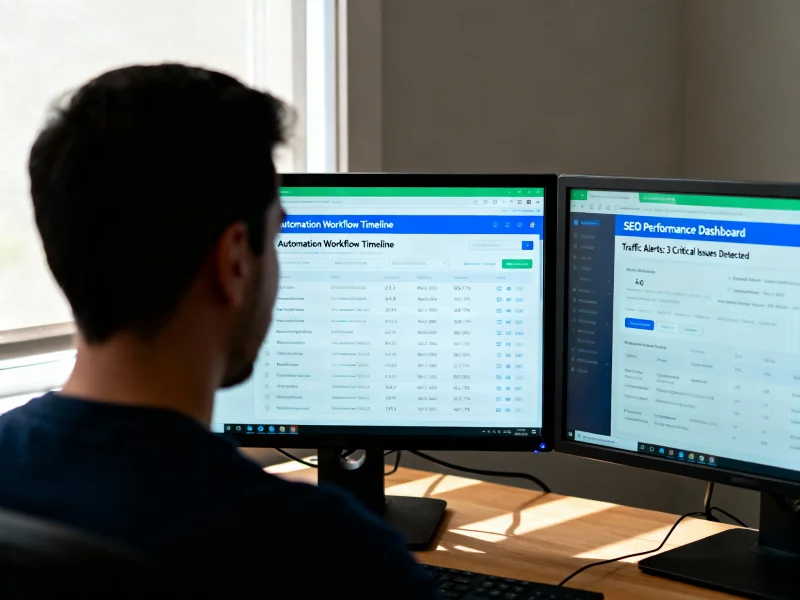Technical Seo: The Unsung Hero Of Your Site's Success
Search engine optimization (SEO) is undoubtedly an essential aspect of any website's success. However, there are two primary types of SEO: on-page and off-page. While both are crucial, technical SEO often goes unnoticed despite being the foundation that supports all other efforts.
Technical SEO involves optimizing a website's structure to ensure search engines can crawl and index it efficiently. This includes factors such as site speed, mobile responsiveness, URL structures, meta tags, schema markup, and more. Ignoring these elements could result in poor rankings or even complete exclusion from organic search results. Therefore, understanding technical SEO can help you achieve higher visibility in search engines while providing a better user experience for your audience.
The Importance Of Technical Seo
The world of SEO is complex and multifaceted, with various elements to consider in order to achieve online success. One critical aspect that often gets overlooked is technical SEO. This refers to the optimization techniques applied to improve a website's backend structure and functionality, ultimately enhancing its search engine ranking potential.
One significant factor of technical SEO is crawl budget management. Crawl budget refers to the number of pages on your site that search engines will crawl within a given timeframe. By optimizing your site's architecture, you can ensure that crawlers focus on indexing the most important pages first, which can boost your overall visibility.
While content SEO focuses on improving the quality and relevance of a website's content, technical SEO plays an equally vital role in ensuring optimal performance. The key lies in finding the right balance between these two approaches. Technical optimizations such as improving mobile responsiveness and page speed have become increasingly essential for user experience, while still contributing to higher rankings.
By prioritizing technical SEO alongside other crucial components like content strategy and link building, webmasters can create a robust foundation for their sites' success. Whether it be through implementing structured data or conducting regular audits, investing in technical optimizations can help enhance your online presence and drive better traffic results over time - making it an unsung hero worth paying attention to.
Optimizing Site Speed For Better Rankings
- Minimizing HTTP Requests is an effective approach to reducing the amount of time a web page takes to load, thus improving its speed.
- File Compression can be used to reduce the size of large files, which can help to reduce the time it takes for a website to load.
- Caching can be utilized to store data from a website so that the same data doesn't need to be retrieved multiple times, thus improving the performance of the website.
- By optimizing site speed through minimizing HTTP requests, file compression, and caching, websites can benefit from improved rankings in search engine result pages.
Minimizing Http Requests
Optimizing site speed is a crucial aspect of technical SEO. One effective way to achieve this goal is by minimizing HTTP requests, which can significantly reduce the loading time of your website's pages. Image optimization is one strategy that webmasters use in order to minimize these requests. By compressing image files and reducing their size without sacrificing quality, you can lessen the amount of data that needs to be transferred from server to browser.
In addition to optimizing images, another technique for minimizing HTTP requests is through browser caching. When a user visits your website, their browser stores certain elements like logos or stylesheets on their local computer so they don't have to be downloaded again every time the user returns to your site. This reduces the number of HTTP requests needed and speeds up load times overall. To take advantage of browser caching, make sure that you set appropriate expiration dates for cached content so it doesn't become outdated.
Overall, technical SEO plays an unsung but essential role in ensuring the success of your website. Minimizing HTTP requests through techniques such as image optimization and browser caching are just two examples of how small changes in code can lead to big improvements in site speed and ultimately better rankings in search engines. By remaining vigilant about technical SEO best practices, webmasters can ensure that their sites remain competitive in an ever-evolving digital landscape.
File Compression & Caching
Another effective strategy for optimizing site speed is through file compression and caching. Compressing files, such as HTML, CSS, and JavaScript, can significantly reduce the size of your website's pages without compromising their functionality. This minimizes the amount of data that needs to be transferred between server and browser, resulting in faster load times.
Furthermore, caching frequently used resources like images or scripts in a user's browser can also improve site speed. By storing these elements locally on a user's computer instead of downloading them every time they visit your website, you reduce the number of HTTP requests needed and ultimately decrease loading times. It's important to note that setting appropriate expiration dates for cached content is crucial to ensure that users are seeing up-to-date information.
Overall, incorporating practices like image optimization, browser caching, and file compression into your technical SEO strategy can have significant impacts on site speed and ultimately lead to better rankings in search engines. Keeping abreast of best practices in this area will help webmasters stay competitive in an increasingly digital landscape where page loading speeds play a vital role in user experience.
Mobile Responsiveness And Seo
In order to optimize your website and improve its ranking, optimizing site speed is crucial. Site speed has a direct impact on user experience, as users tend to abandon websites that take too long to load. Additionally, search engines favor faster-loading sites because they want to provide the best possible user experience for their own users.
However, optimizing site speed alone is not enough. With mobile devices dominating internet usage today, it's important to ensure that your website is also mobile-responsive. Mobile-first indexing means that Google will be primarily using the mobile version of your website content for its index and ranking. This makes it essential for businesses with online presence to have a responsive design that adapts seamlessly across all screen sizes.
One way to achieve better mobile responsiveness and page loading speeds is through Accelerated Mobile Pages (AMP). AMP pages are designed specifically for fast-loading performance on mobile devices by stripping down unnecessary elements such as JavaScript and third-party scripts. By adopting AMP technology, you can significantly enhance the mobile-friendliness of your website while improving its overall SEO performance in terms of both rankings and traffic.
Understanding Url Structures And Meta Tags
URL structures are the framework of a website, which can have a strong impact on the success of the website and its visibility to search engines. Meta tags are snippets of code that provide information about the page, such as a page title, description, and keywords, and can be used to improve the visibility of a website in search engine results. Understanding URL structures is essential for creating effective URLs that are easy for users to navigate and for search engine spiders to crawl. Meta tags can help search engines better index and understand a website, making it easier to find in search engine results.
Understanding Url Structures
Understanding URL structures is a fundamental aspect of technical SEO that can significantly impact your website's success. It involves creating a clear and logical hierarchy for your URLs, which helps search engines understand the organization of your site and how different pages relate to each other. A well-structured URL hierarchy not only makes it easier for users to navigate your site but also improves its visibility on search engine results pages.
One important consideration when structuring URLs is the use of parameters. These are additional pieces of information added to the end of a URL after a question mark (?), which help track user behavior or customize content based on specific criteria. While parameters can be useful in certain situations, they can also create duplicate content issues if not managed properly. Therefore, it's crucial to ensure that any parameterized URLs are canonicalized correctly so that search engines don't index multiple versions of the same page.
Overall, understanding URL structures is vital in ensuring effective communication between your website and search engines. By implementing a clear hierarchy and managing parameters appropriately, you can improve your site's crawlability, indexing, and ultimately its performance on search engine results pages. So take some time to optimize your URLs today - it will pay off in the long run!
Meta Tags
Understanding URL structures is crucial, but it's not the only aspect of technical SEO that you need to consider. Another essential element is optimizing your meta tags. Meta tags are snippets of text that provide information about a webpage and appear in search engine results pages (SERPs). They include the title tag, which appears at the top of the browser window and describes the content of the page, and the meta description tag, which provides a brief summary of what users can expect from clicking on the link.
To optimize your meta descriptions for SERPs, there are some best practices you should follow. First, make sure they accurately reflect the content on your website. This will help ensure that users click through to your site when they see it in their search results. Additionally, keep them concise - aim for around 155-160 characters or less so that they don't get cut off in search engine previews. Finally, use strong calls-to-action where appropriate to encourage users to engage with your content further.
Overall, understanding how to optimize meta tags is an important part of improving your website's visibility online. By following best practices and crafting accurate and compelling titles and descriptions, you can help drive more traffic to your site while also providing valuable information to potential visitors. So take some time to review your meta tags today - it could make all the difference!
Schema Markup And Its Impact On Search Results
Implementing schema markup is a vital part of technical SEO that can significantly impact your site's success. Structured data implementation helps search engines understand the content better, resulting in improved visibility in the SERPs. When structured data is implemented correctly, it enables rich snippets optimization, providing users with more information about your website before they even click through to it.
Here are three ways schema markup impacts search results:
- Increased Click-Through Rates: Rich snippets help highlight specific details about your website, such as ratings or reviews, which make them stand out in the SERPs. As a result, users are more likely to click through to your site than those without enhanced results.
- Better User Experience: By implementing schema markup, you're providing users with relevant information upfront, making their experience more seamless. This leads to increased engagement and ultimately higher conversion rates.
- Improved Visibility: Schema markup not only helps improve click-through rates but also visibility within the SERPs themselves. Google may feature websites with structured data at the top of search results pages for queries related to that organization or topic.
In summary, schema markup plays an essential role in improving your website's performance in organic search results by increasing click-through rates, enhancing user experience and improving overall visibility. To ensure maximum benefits from structured data implementation, businesses should work closely with SEO experts who can guide them on how best to implement schema.org tags across their webpages while adhering to Google's guidelines for optimal results.
Frequently Asked Questions
What Are Some Common Technical Seo Issues That Website Owners Should Be Aware Of?
Crawling errors and duplicate content are two common technical SEO issues that website owners should be aware of. Crawling errors occur when search engine bots encounter issues while trying to access a site's pages, resulting in incomplete indexing or exclusion from search results. Common causes include broken links, server errors, and inaccessible pages due to robots.txt directives. Duplicate content refers to identical or similar content appearing on multiple URLs within the same site or across different domains. This can lead to diluted link equity, confusion for users and search engines, and potential penalties for violating Google's guidelines. Identifying and addressing these technical SEO issues is crucial for maximizing a site's visibility, user experience, and overall success.
How Can Technical Seo Help Improve Website Visibility On Search Engines?
The importance of crawlability and utilizing XML sitemaps cannot be overstated in improving website visibility on search engines. Technical SEO plays a crucial role in optimizing websites for crawling and indexing by search engine bots, which ultimately affects their ranking performance. Sites with poor crawlability due to broken links or inaccessible pages may have difficulty being indexed, resulting in low visibility on SERPs. On the other hand, creating an XML sitemap can facilitate easier discovery of important content by search engines, leading to improved rankings and increased traffic. By implementing technical SEO best practices such as these, website owners can enhance their site's overall performance and achieve greater online success.
What Role Does Website Speed Play In Seo, And How Can It Be Improved?
Website speed is an essential aspect of SEO, and it directly influences the user experience. Website caching can significantly improve website loading times by storing frequently accessed data in a cache memory for faster retrieval. Additionally, image optimization plays a crucial role in reducing page load time since images are often the largest files on a web page. This process involves compressing images without compromising their quality to reduce file size. Web developers can use various tools like Google's PageSpeed Insights or GTmetrix to analyze site speeds and identify areas that require improvement. Improving website speed not only enhances the user experience but also boosts search engine rankings and overall site performance.
How Does Mobile Responsiveness Impact Seo, And What Steps Can Be Taken To Ensure A Website Is Mobile-Friendly?
The importance of UX and the impact of Google's Mobile First Indexing have made mobile responsiveness a critical factor in SEO. With more than 50% of internet traffic coming from mobile devices, it is essential to ensure that websites are optimized for mobile users. A website that is not mobile-friendly will result in poor user experience, which can lead to high bounce rates and low engagement metrics. To improve mobile responsiveness, steps such as using responsive design, optimizing images and videos, reducing page load times, and ensuring proper font sizes should be taken. By prioritizing mobile responsiveness, businesses can improve their search engine rankings and attract more traffic to their sites.
What Are Some Best Practices For Using Schema Markup To Enhance Search Results And Improve Seo?
Schema markup is a powerful tool for enhancing search results and improving SEO. By using structured data, website owners can provide additional information to Google's Knowledge Graph, which in turn helps the search engine better understand the content of their site. The Structured Data Testing Tool can be used to ensure that this data is properly formatted and will appear correctly in search results. Rich snippets are another way to make your site stand out in organic search by providing more detailed information about specific pages or products. For local businesses, implementing schema markup can help with Local Business SEO by allowing important details like business hours and reviews to be displayed directly in search results. JSON LD is a popular format for encoding structured data, but other formats like Microdata and RDFa may also be used depending on the needs of your site. Finally, including breadcrumbs in your schema markup can help users navigate through your site while also giving Google more context about how different pages relate to each other.
Conclusion
Technical SEO is often overlooked, but it plays a crucial role in ensuring that websites are visible and accessible to search engines. Common technical issues such as broken links, duplicate content, and incorrect meta tags can negatively impact website rankings. Technical SEO helps improve website visibility by optimizing the structure of the website for search engine crawlers, improving page speed, and ensuring mobile responsiveness.
Website speed is an important factor in SEO as slow-loading pages can lead to higher bounce rates and lower user engagement. Mobile responsiveness also impacts SEO as more users access websites through their smartphones. By implementing schema markup, website owners can enhance search results and provide valuable information to users while improving their overall SEO performance. In conclusion, technical SEO should not be ignored in favor of other marketing strategies as it serves as the foundation for a successful website's online presence on search engines.









